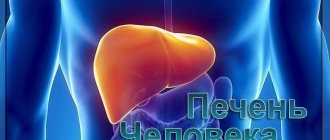Hepatitis is a disease of liver cells associated with the pathology of infection with seven types of viruses (A, B, C, D, E, F and G). All of them are dangerous and cause damage to organ tissue. Is hepatitis B or hepatitis C more dangerous in its effects? Having studied the pathogenesis of the species, we can say that the most insidious of them is hepatitis C.
Both viruses attack the liver and eventually lead to cirrhosis.
What are hepatitis B and C?
It got its name from the Latin hepatitis - inflammation of the liver due to damage to its cells by the virus. The modes of transmission of both types are parenteral, i.e. sexually or through the bloodstream. Previously, the disease occurred as a consequence of a transfusion of contaminated blood. Now infection occurs in people at increased risk (drug addicts, prostitutes).
Hepatitis B is caused by hepadnaviruses. Hepatitis C is caused by flaviviruses. Hepadnaviruses are resistant to critical temperatures and physical impact. They can retain pathogenic properties for a long time. No means of disinfection can destroy it. The dangerous hepatitis C virus does not exist in an aggressive external environment.
A person’s defenses play a major role in the course of the disease. The dangerous hepatitis B virus can be cured after drug treatment and immunity. With insufficient immunity, the infection remains in the organ for many years, then the disease takes on a chronic stage.
Hepatitis C is spread primarily through the blood. Symptoms appear 1-10 weeks after infection, but they are vague. Jaundice usually does not occur. The danger is that it occurs in a chronic stage. The result is cirrhosis of the organ. Now it is possible to test donor blood. This dramatically reduced infections after blood transfusions.
These two types are not transmitted through household objects, food, kisses, etc. If there are no skin lesions, you cannot become infected with these two viruses. Mosquito bites and cat scratches are not scary.
This is interesting: Is it possible to cure hepatitis B forever: with medications or folk methods at home?
What is the danger?
The danger of hepatitis C is due to the fact that the disease passes without pronounced symptoms. Most often, pathology is discovered during an examination, and already when there is a high probability of developing such negative consequences as cirrhosis or liver cancer.
Despite the fact that hepatitis C does not make itself felt in any way during the incubation period, a person is considered a carrier of the virus and actively spreads the infection among his friends and relatives.
Transmission of infection occurs in the following ways:
- Parenterally - through the blood during the use of insufficiently sterilized medical instruments, when using a disposable syringe by different people. The largest percentage of patients infected with hepatitis C is observed in the group of people who use drugs. In addition, the transmission of viral infection occurs through the use of household sharp objects (during a manicure, when using someone else's razor).
- During sexual intercourse. The likelihood of contracting hepatitis C increases in people who constantly change partners and have unprotected sex.
- In utero - hepatitis C is transmitted from a pregnant woman to her baby if the pathology was in an acute form during labor. Intrauterine infection occurs only in 5-10% of cases.
Unprotected sexual contact
Routes of transmission of hepatitis B and C
Is it possible to become infected with hepatitis, and how does it happen?
The virus enters the blood of a healthy person through:
- microtraumas and cracks;
- sperm;
- vaginal discharge;
- medical procedures without disinfecting instruments.
The dangerous virus is transmitted from a person diagnosed with acute (chronic) hepatitis B (C).
The infection is transmitted through blood. It enters through blood and fluids (unprotected sex, infected needles during intravenous drug administration; needles used for tattooing, acupuncture). Infection occurs when semen, vaginal secretions and infected blood enter the bloodstream of a healthy person. It can be transmitted to a child during birth through the mother.
Previously, infection occurred through transfusion of donor blood with the virus. But since 1972, laboratory testing of donor blood samples has eliminated this possibility.
Types of disease
Hepatitis is a common liver pathology, which can also be non-infectious in nature. The disease can develop against the background of:
- food or drug poisoning;
- alcoholism;
- autoimmune diseases.
Even a disordered digestive tract can contribute to the development of pathology. But it is the viral form of the disease that causes the greatest damage to liver tissue.
This type of virus multiplies only within the liver cells, where it enters along with the blood. Thanks to the immune system, the process of destroying infected cells soon begins, but at the same time the liver partially loses its functions.
Different types of the disease have different symptoms, but some signs can be identified that are common to all types of pathologies. This:
- general weakness;
- intestinal dysfunction;
- enlarged liver and spleen;
- flaky skin;
- pain on the right in the area of the ribs.
- Hepatitis A, or Botkin's disease in other words, appears as a result of violation of hygiene rules. The disease responds well to treatment, never becoming chronic. This type is the most common.
- Hepatitis B causes severe liver damage. This type of disease is transmitted through blood or sexual contact, as well as from mother to children during childbirth. It has severe symptoms, such as vomiting and fever, but responds well to treatment.
- Hepatitis D is a virus that can attack the body only if it already has a type B virus. In this case, a significant deterioration in the patient’s condition occurs, there is a risk of cirrhosis or cancer, and the pathology can become chronic. Type D is a rare disease, but terrible in its consequences.
- Hepatitis E is in many ways similar to Botkin's disease. However, this type is dangerous for pregnant women, as it can lead to the death of not only the child, but also the mother. The disease often affects the kidneys along with the liver. In most cases it is successfully treated.
The most dangerous hepatitis is type C, which often leads to severe and incurable diseases.
Symptoms
Contact your doctor if you suspect an infection. Symptoms show signs of being infected by a virus if:
- jaundice appeared;
- the stool became light;
- urine darkened;
- decreased appetite;
- physical condition is alarming;
- soreness in the right side.
One of the main symptoms of hepatitis is pain in the upper abdomen.
After diagnosis, immediate hospitalization is required.
The time from the onset of the lesion to the onset of symptoms varies. With form B – up to six months. During this time, the viral infection adapted and began to manifest itself. Symptoms at first are similar to those of the flu:
- headache;
- malaise;
- joint pain;
- rashes.
There is no sharp increase in temperature, although it is rising.
Manifestations of form C are limited to loss of appetite and weakness. After a couple of days, pain appears in the right hypochondrium, nausea, darkening of the urine, lightening of the stool, and vomiting. When palpated, the organ is enlarged. Signs characteristic of hepatitis are found in the blood:
- high bilirubin;
- virus markers;
- liver tests increase 8-10 times.
After yellowing of the skin and whites of the eyes appears, the condition improves.
The clinical picture can be in mild, moderate and severe stages of development. There is also a fourth stage – the fast stage (fulminant). A dangerous virus quickly attacks an organ. This is the most severe course of the disease. It is characterized by extensive tissue necrosis, after which death is possible. The danger is the chronic course of the disease. Signs are characterized by the following symptoms:
- fatigue;
- itching of the skin;
- darkening of urine and lightening of stool;
- bleeding;
- sudden weight loss;
- organ enlargement;
- the appearance of spider veins;
- jaundice.
This is interesting: Anti-HBs positive and negative: what does this mean, decoding
The first signs of the disease
What is the most dangerous hepatitis and its symptoms? The incubation period for hepatitis C is about 50 days. The person does not feel any symptoms of the disease and feels completely healthy. The maximum period of the hidden period can be up to 140 days.
Initially, you should consider the signs of hepatitis B and A in order to understand their similarities and differences from type C.
Signs of infection with viral form A:
- in children, the disease manifests itself 4-6 months after contact with a sick person;
- In adults, the disease begins acutely: fever, chills, darkened urine, yellowed whites of the eyes and skin.
Main signs of hepatitis B:
- Infection appears 1.5-6 months after infection.
- Slight increase in temperature.
- Pain in joints and muscles.
- Urine becomes dark in color.
- The skin turns yellow.
The disease may not manifest itself for a long time, but the carrier freely infects other people.
What type of hepatitis is the most dangerous? Despite the fact that the most serious pathology is the type C virus, form B of the disease also poses a threat to human health. In order to identify a pathology in time, it is necessary to know its symptoms exactly.
Signs of hepatitis B in chronic form:
- has similar symptoms to the acute form;
- A chronic disease can develop over several years, and is discovered accidentally during testing.
Which genotype of hepatitis C is the most dangerous? Signs of hepatitis C:
- Long-term asymptomatic disease with gradual development of liver cirrhosis.
- Chronic fatigue, nausea, vomiting and fever (37-37.5 degrees) occur.
- Symptoms usually appear 1.5 months after infection.
- The virus is easily transmitted to other people, but the person is not aware of it.
As the disease progresses, jaundice begins and the spleen enlarges.
What is more dangerous: hepatitis B or hepatitis C?
Which hepatitis is more dangerous during the course of the disease? Hepatitis C is called the soft-pawed killer or the gentle killer. It has vague symptoms. It enters the critical stage in 40% of cases, decomposition of liver cells occurs in 10-40%. There is no specific cure. Interferon is not effective in this form and is expensive. The most common form is B. It is acute, but does not cause complications. In 10%, the acute stage becomes chronic, in 1% an irreversible change in the organ develops.
What is worse, hepatitis B or hepatitis C? Both forms pose a threat to the body. Hepatitis C, entering the body, immediately affects the cells of the organ. The infection is transforming, new forms are constantly emerging. The body adapts to these changes, the immune system is depleted. Lack of diagnosis and therapy leads to the development of neoplasms or cirrhosis. Sex without protection is dangerous. Transmission is possible in 40% of cases.
The symptoms of the form B virus are similar to others. But they appear later (2-3 months), last a long time and are dangerous for loved ones. Vaccination will help prevent the disease. A vaccination given after a lesion will stop the development of the disease. What do scientists think, which hepatitis is the most dangerous? Many researchers call the form C virus the gentle killer and believe that it is the most dangerous. It causes severe complications, is poorly diagnosed and has no vaccine.
Factors contributing to the rapid development of the disease
Other characteristics of the body can have a negative impact on this process, such as:
- childhood;
- old age;
- presence of HIV or AIDS in the body;
- the patient has other types of disease;
- taking drugs;
- alcohol abuse.
According to statistics, 50% of those infected with modification C die within ten years, this is due to late detection of the disease. There are no vaccinations against this virus that could provide a person with 100% protection. The most dangerous hepatitis C is practically incurable, but there are ways to somewhat delay its development.
One of the key points during infection is the state of the human immune system. Only people with good immunity are able to resist this disease.
In order to somehow protect yourself from this insidious virus, you need to take into account all methods of infection and reduce risks to a minimum and, of course, undergo regular examination. If you have the slightest suspicion, you should immediately contact a specialist.
Hepatitis refers to inflammatory liver diseases. There are several types of pathology. Depending on the type of hepatitis, one can draw a conclusion about the course, pathogenicity and method of therapy. Any of us should know the signs of the disease, because some of its varieties are asymptomatic. What is the most dangerous hepatitis? The article will discuss the course of the disease and its features.
Treatment of hepatitis
Treatment of both forms is carried out in a hospital. Based on the symptoms, treatment of the organ and associated diseases is prescribed.
During the period of complications, it is necessary to increase the body's immune defense. Therefore, immunostimulants and vitamin preparations are prescribed.
Inflammatory processes are eliminated with special drugs. The infection is suppressed by antiviral therapy: Interferon, Biboverin, Pegintreferon. "Sofosbuvir" together with "Riboverine" or "Harvoni" will stop the proliferation of a viral infection inside the cell.
This is interesting: How long do people live with chronic hepatitis B? Symptoms, diagnosis, treatment and prognosis
Nucleotide agents are used: Tenofovir, Sebivo, Zeffix or their analogues. Along with drug treatment, herbal medicine can be prescribed. It is prescribed and monitored by the attending physician. Folk recipes based on mumiyo, bee products, and medicinal plants are used. They support the functioning of the diseased organ, relieve inflammation, and destroy infection. Unlike drug treatment, there are no side effects.
In the treatment of hepatitis B and C, antiviral drugs, immunostimulants and hepatoprotectors are used
Principles of classification
There are several types of this disease. Each of them has its own characteristics and consequences. The main criterion according to which the classification of viral pathology is carried out is its causative agent (Table 1). Hepatitis can also be drug-induced, autoimmune and alcohol-related. But the majority of patients are diagnosed with a disease of viral origin, leading to severe consequences for the body.
Table 1 - Forms of viral hepatitis depending on the pathogen.











